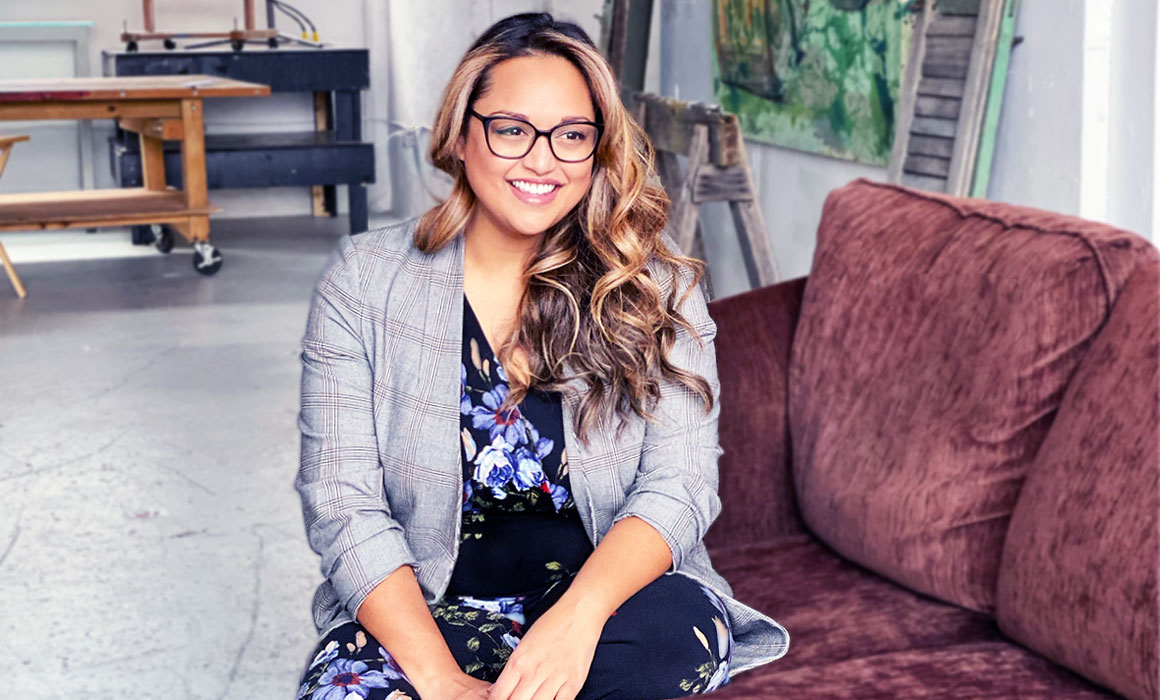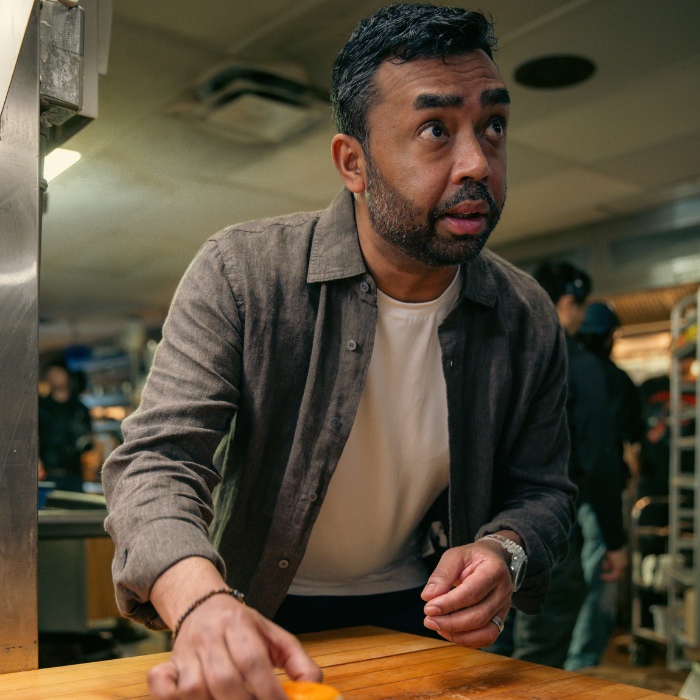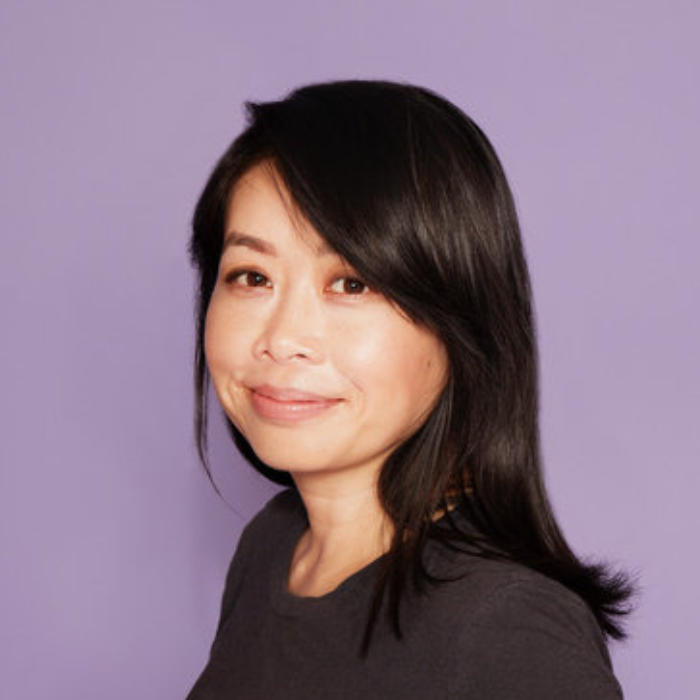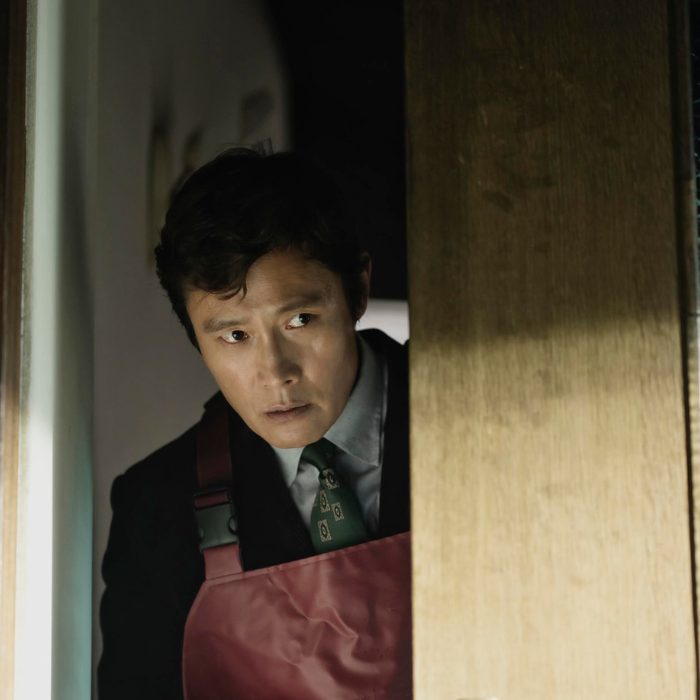As a ‘90s kid, Amanda de Souza grew up watching a lot of TV, but never saw her Filipino-Indian heritage represented. It wasn’t until she reached her twenties that she finally saw a role model who looked like her on TV: Mindy Kaling.
“She’s actually been a huge inspiration to me,” de Souza said. “It sounds sad, but I didn’t realize that someone who looked like me could act, write and direct. It’s so simple.”
De Souza was a graphic designer for 10 years before entering the film industry four years ago. She was always a creative kid with a huge passion for performing arts, but knew her parents wanted her to choose a less risky career. “They’d always say, ‘You can do whatever you want when you finish school,’” de Souza said, laughing.
The Whitby, Ont.-native spent part of her career working in New York City, but returned home when her mom got sick. She then decided to go back to school in Toronto at age 30, which is where she discovered her passion for filmmaking.
“I realized how many talented individuals and artists go into making a film,” she said. “[My mom] actually passed away the first week of my courses. That was also the reason why I had this epiphany that life is short. If I want to be on the creative side of anything, now’s the time to do it. I did the safe route and it wasn’t fulfilling enough, so screw it. Let’s try to go for film.”
Her first gig after graduation was as director Susan Johnson’s assistant on the film To All the Boys I’ve Loved Before. Since then, she’s worked on TV series like The Umbrella Academy, Chucky, and One of Us is Lying, as well as the film Spiral: From the Book of Saw. But undoubtedly one of her most meaningful projects thus far is Spin, Disney Channel’s first original movie with an Indian-American lead.
Below, de Souza speaks to The RepresentASIAN Project about her experiences working on films with female Asian protagonists and how she’s figuring out her identity as a mixed-culture kid.
On the best part about working on To All The Boys I’ve Loved Before
I was so happy [to work on this film]. I immersed myself in the books and I have an older sister whose name is Lara, so I just really connected with the Asian storylines and having that [sisterly] bond.
I was curious how we were going to pull this off. This was four years ago, so this [was] really only the beginning of the inclusion [conversation] in Hollywood. I was really proud that we were going to have a diverse cast and [director] Susan Johnson. She was really adamant about having more diverse casting choices, which I was really impressed with because it was my first job and you hear so many stories [about people advocating for inclusion]. You read about it, but is it really going to happen? Are there really people out there and executives who are actually pushing for these things? [Johnson] was, so I was really impressed and so happy to be a part of it.
I was there for auditions, so even just seeing people have the opportunity to come in and read for characters that never existed before in western films was great. You never get to see a female Asian lead as a protagonist in the story. And Netflix wasn’t on board when we made [the film], so we had no idea how far it was going to go or how big it was going to be. So it was extremely fortunate that it did really well and resonated with so many people.
On why Disney’s Spin is so meaningful to her
I’m really fortunate that I got to do To All The Boys and now Spin. Maybe I manifested it [because] I was actually supposed to be actor Woody Harrelson’s assistant. But before he even got to town, I read this article about how they were shooting Spin in Toronto, and it was an Indian woman director and an Indian female lead and the story was about a girl who finds her love of music after losing her mother. I was like, “Oh my god, I have to be a part of this movie!”
I found [the director’s] email address and I cold emailed her. She wrote back and said she already had an assistant [but would] pass on my resume. Then nothing happened so I kind of just gave up on it.
But one day I got a phone call from the director and she said, “My assistant is leaving. Do you want to come in for an interview?” So I got the job. That’s what I meant by manifesting it. I just wanted to work on it so bad, then it happened, so I quit the Woody Harrelson job. They were not very happy about that, but I just explained that I had to do this. It’s because of my heritage, the message is important to me, and it’s Disney’s first South Asian female-led movie. And I’m a big Disney fan.
And, you know, I have an eight-year-old niece. I took her to see A Wrinkle in Time and when Mindy Kaling came on the screen, she went, “She looks like me!” I never had that experience, so I’m just so excited for her to grow up with all these new movies where people look like her and it’s normal. It’s not like we have to point out that this is the first of anything. It’s that we’re now including people so that things just look like a real reflection of the world.
On how Apu from The Simpsons affected her feelings about being Indian
There’s been a lot of controversy about the Apu character on The Simpsons and so many people are mad, but I have a very personal story. When I was a kid, everyone used to make fun of that character.
My dad was born in India, but he grew up in Africa, so when I was little I thought he was African. I just thought, You talk about Africa all the time, so I’m African. [One day there] was something at school where we had to stay where we were from and I said, “My dad’s African.” When my dad asked me why I said that, I was like, “I don’t know. I thought you were African.”
He said, “No, you’re Indian,” and I remember I got so upset because I didn’t want to be Indian because of Apu, which is so sad because one of my first realizations of who I was culturally was disappointing.
I think people don’t realize the problem is that there are so few three-dimensional South Asian characters on TV. So if the only characters on TV are all parodies or jokes, what do you think is going to happen? When most people on TV [are Caucasian] and get the opportunity to be three-dimensional characters and real people, then it’s OK to have a parody version. But if all you have is a parody, it’s going to cause problems. So that was my first experience realizing there’s just not enough representation on TV, and I kind of grew up just accepting that until recently.
On how being called “Brownie” in school drove her advocacy for inclusion
I grew up in Scarborough, [Ont., but] in the fourth grade we moved to Whitby, so it was a huge contrast. In Scarborough, there’s so many different cultures. We were heavily involved in our church [too, and] they really embraced multiculturalism. When I moved to Whitby, it was the complete opposite. I was looking at my classroom and everybody had blonde hair, so I kind of assimilated myself.
Then when I got to high school, someone was like, “Hey Brownie,” and I had this realization that, “Oh my God, I’m different.” It wasn’t that [being called Brownie] made me feel bad. I felt cool, like I had a nickname. But the interesting thing is that I remember a friend of mine calling me that and her mom overheard. [Her mom] was so upset and I just [thought,] oh, this is actually more embarrassing for people who aren’t Brown to hear this.
And what actually stood out to me was, years later, someone apologized [for calling me that]. They sent me a message [basically saying,] “I realize now it was not okay.” I didn’t even realize how that affected me then because it was just high school. People pick a thing about you and it becomes your nickname. But I realize now what a disservice I was actually doing myself because it did set me apart and it wasn’t okay. So looking back, [it’s] very disappointing, which is all the more reason why I’m so adamant now about being proactive about inclusion.
“I think people don’t realize the problem is that there are so few three-dimensional South Asian characters on TV. So if the only characters on TV are all parodies or jokes, what do you think is going to happen? When most people on TV [are Caucasian] and get the opportunity to be three-dimensional characters and real people, then it’s OK to have a parody version. But if all you have is a parody, it’s going to cause problems.
On the challenges of figuring out her cultural identity
All of the culture that I learned was from my parents. They tried to [give my siblings and I] an equal understanding of both sides (Filipino and Indian), but also really wanted us to just grow up as Canadian kids. I actually do wish [they went] more into detail about our culture. I find that as an adult, I’m asking more questions about it now to my dad and my family.
I’m kind of a traveler, so I’ve taken it upon myself to visit family around the world and ask them questions and learn more about our family and culture. I didn’t actually get to visit the Philippines until after my mom passed away, unfortunately, but I had visited India many times. My Indian cousins call me a coconut [because] I don’t know enough about our culture. It’s upsetting to me because while I was very privileged to grow up here, I also did lose that [cultural] identity. But then again, the identity can’t be so easily defined, especially when you’re a mixed-culture kid.
So it’s tough. It’s something our generation, especially kids of immigrants, are constantly working through. There’s no roadmap for our parents and there’s no roadmap for us, so it’s kind of just constantly working through that self-identity and trying to get back to it, honour it, but then also find your identity where you are now. It’s an ongoing, transformative thing. There’s no definitive answer.
“Identity can’t be so easily defined, especially when you’re a mixed-culture kid.”
On her experience working on film crews as a woman of colour
I’ve definitely had moments where I realize we have a long way to go. There’s been little clashes where people might not be mindful of comments they make. The older generation kind of thinks they can make off-colour jokes. It’s disappointing, but it’s also just how it is. But those moments [are also an] opportunity to be like, “OK, stop.” I’ve witnessed those moments where people have spoken up.
But overall [it’s been] a positive experience. I still think there could be [more] diversity in crews and I am noticing, very slowly, more people of colour [behind the scenes]. And in the last couple of years, I’m really happy to see so many organizations and companies realizing their missteps [and] having more programs for BIPOC and LGBTQ individuals to be in film and to have more opportunities.
Sometimes I feel it’s unfortunate that we have to apply for these things like we’re trying to win a lottery to have a career. I hope it doesn’t always have to be like that, but I think to expedite righting the wrongs of not having enough people of colour in film, it’s OK right now. I just hope in the future, the inclusion is there and more people are represented.
Like this post? Follow The RepresentASIAN Project on Instagram, TikTok and YouTube to keep updated on the latest content.











